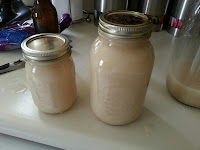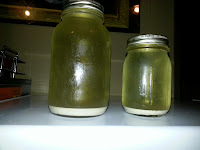Perhaps you suffer from this disorder as I do. During certain times of the year you find yourself craving particular styles of beer. I, for example, want light colored beer in the summer and heavier / stronger (abv) beer in the winter. If you live in an area where there is no winter you may be confused right now. Winter is a season when it gets cold and dark and depressing.
At this time I find myself wanting something wheat, or bright, or session-able. And I have nothing that matches that description. I have quite a few that will be available soon, but what does that do for me today? Nothing.
Can you relate? If so, here is my advice. Be proactive! Begin brewing these beers in preparation for the changing seasons, not in reaction to them. Had I begun brewing these beers a month earlier I would have a Kolsch, an American Wheat, and a Helles at my disposal. And significantly less to write about...






